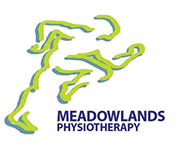The Role of Cryotherapy in Physiotherapy
Cryotherapy is an overarching term used to encompass the use of cold temperatures within healthcare and rehabilitation processes. Cryotherapy, also known as cold therapy or ice treatment, has many uses within physiotherapy and can be very beneficial in helping you to reap the full benefits of your physiotherapy treatments!
What Does Cryotherapy Entail?
The use of ice and cold in physiotherapy treatments can be administered in a number of ways. Depending on the location of the targeted area as well as the intended goal of the cryotherapy treatment, your physiotherapist will determine the optimal manner of application to help you through your pain and recovery.
Some cryotherapy methods include:
- Ice Packs: A common method of cryotherapy, packs filled with cubed, crushed, or wetted ice are useful for lowering surface temperature during treatment. Wetted ice especially helps to maintain a lower temperature during recovery, and effectively lowers the intramuscular temperature during treatment.
- Ice Spray: Icing spray produces a cooling effect on a localized area, to help lower the temperature of the target area during treatment.
- Immersion: Immersing the affected area in cold water, or ice water, is a very effective method of cryotherapy.
- Ice Massage: Administering gentle massage with a block of ice is a quick way to achieve the benefits of cryotherapy, providing immediate pain relief to injuries and certain chronic conditions.
Effects of Cryotherapy
A physiotherapist may suggest cryotherapy if they believe that cold treatment and its effects would be helpful in your journey to recovery. The use of ice and cold temperatures acts to decrease the temperature of the skin and soft tissues, resulting in decreased blood flow to the affected areas. Decreasing blood flow leads to:
- Reduced swelling. In reducing the blood flow to a particular area, this also helps to prevent and manage swelling.
- Reduced inflammation. In decreasing circulation in the area, inflammation is reduced.
- Prevention of hypoxic damage. Narrowing of the blood vessels reduces the need for oxygen to the tissues, which acts to prevent hypoxic damage.
Not only does cold treatment help to minimize blood flow and reduce damage to the surrounding areas, it is also a very useful technique in pain management and providing pain relief to injured parts of the body.
When to Choose Cryotherapy
Cold therapy is an effective aspect of treatment for a variety of problems and afflictions. Whether you suffer from inflammation or simply would benefit from its pain-reducing properties as you undergo additional physiotherapy treatments, cryotherapy might benefit you in your journey to rehabilitation. Consider asking your physiotherapist about whether cryotherapy is right for you if you suffer from:
- Recent injury
- Osteoarthritis
- Gout
- Tendinitis or acute inflammation
- Muscle spasms
- Limited range of motion
- Localized pain
- Edematous conditions
This is not an exhaustive list, and it is up to you and your physiotherapist to determine whether cryotherapy could facilitate your healing process. To consult with our team or to book an appointment, contact Meadowlands Physiotherapy today and we can help you to embark upon the road to recovery!

